Dacia Spring vs Hyundai i10 - Differences and prices compared
Costs and Efficiency:
Price and efficiency are key factors when choosing a car – and this is often where the real differences emerge.
Dacia Spring has a minimal advantage in terms of price – it starts at 14500 £, while the Hyundai i10 costs 14600 £. That’s a price difference of around 77 £.
Engine and Performance:
Power, torque and acceleration say a lot about how a car feels on the road. This is where you see which model delivers more driving dynamics.
When it comes to engine power, the Hyundai i10 has a evident edge – offering 90 HP compared to 65 HP. That’s roughly 25 HP more horsepower.
In acceleration from 0 to 100 km/h, the Hyundai i10 is evident quicker – completing the sprint in 11.40 s, while the Dacia Spring takes 13.70 s. That’s about 2.30 s faster.
In terms of top speed, the Hyundai i10 performs evident better – reaching 175 km/h, while the Dacia Spring tops out at 125 km/h. The difference is around 50 km/h.
There’s also a difference in torque: Hyundai i10 pulls distinct stronger with 172 Nm compared to 125 Nm. That’s about 47 Nm difference.
Space and Everyday Use:
Cabin size, boot volume and payload all play a role in everyday practicality. Here, comfort and flexibility make the difference.
Seats: Hyundai i10 offers a bit more seating capacity – 5 vs 4.
In curb weight, Hyundai i10 is minimal lighter – 996 kg compared to 1013 kg. The difference is around 17 kg.
In terms of boot space, the Dacia Spring offers slightly more room – 308 L compared to 252 L. That’s a difference of about 56 L.
In maximum load capacity, the Hyundai i10 performs slight better – up to 1050 L, which is about 46 L more than the Dacia Spring.
When it comes to payload, Hyundai i10 evident takes the win – 423 kg compared to 302 kg. That’s a difference of about 121 kg.
Who wins the race?
The Hyundai i10 proves to be is largely superior and therefore becomes our DriveDuel Champion!
Hyundai i10 is the better all-rounder in this comparison.
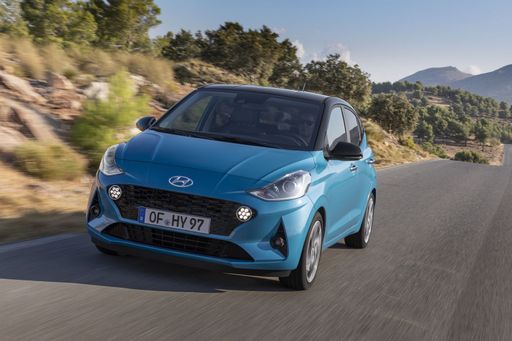 @ Hyundai Motor Company
@ Hyundai Motor Company
Hyundai i10
Costs and Consumption
View detailed analysis
Engine and Performance
View detailed analysis
Dimensions and Body
View detailed analysis
Dacia Spring
The Dacia Spring is an unpretentious city electric that strips EV ownership down to the essentials, offering clean, fuss-free transport for daily urban life. It won't impress luxury-seekers, but its cheerful practicality and rock-bottom running costs make it a clever, no-nonsense choice for anyone who wants electric mobility without the drama.
details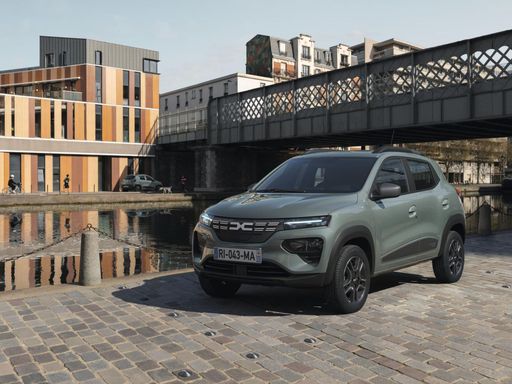 @ Dacia / Renault Group Media
@ Dacia / Renault Group Media
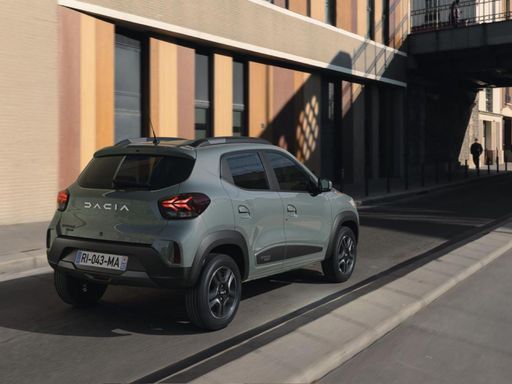 @ Dacia / Renault Group Media
@ Dacia / Renault Group Media
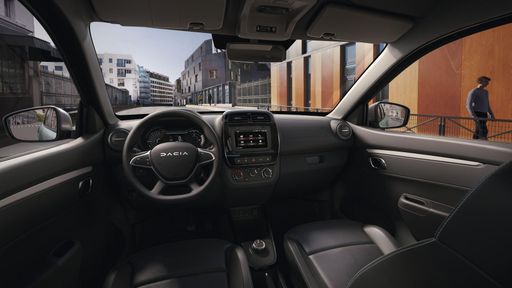 @ Dacia / Renault Group Media
@ Dacia / Renault Group Media
Hyundai i10
The Hyundai i10 is a cheeky city car that squeezes big-car confidence into a pocket-friendly package, carving through tight streets with surprising composure and sensible practicality. For buyers after low fuss, sensible equipment and wallet-friendly running costs, it's a smart, no-nonsense pick that makes sense whether you're a first-time driver or need a reliable second car.
details @ Hyundai Motor Company
@ Hyundai Motor Company
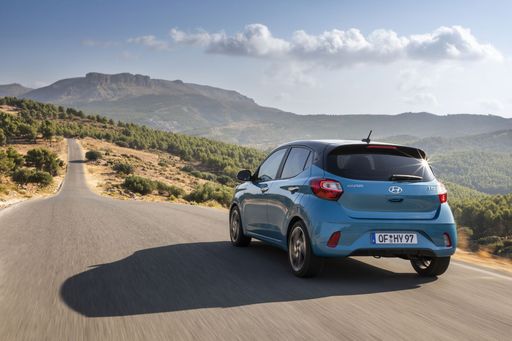 @ Hyundai Motor Company
@ Hyundai Motor Company
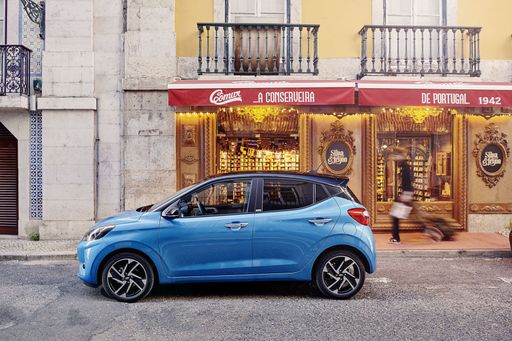 @ Hyundai Motor Company
@ Hyundai Motor Company
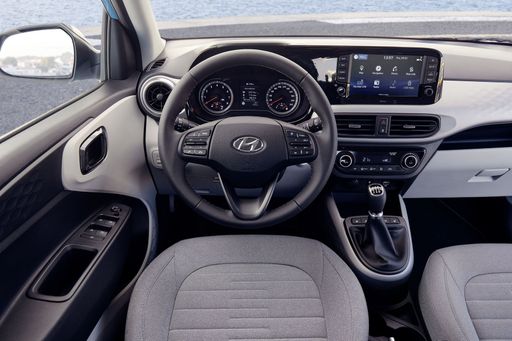 @ Hyundai Motor Company
@ Hyundai Motor Company
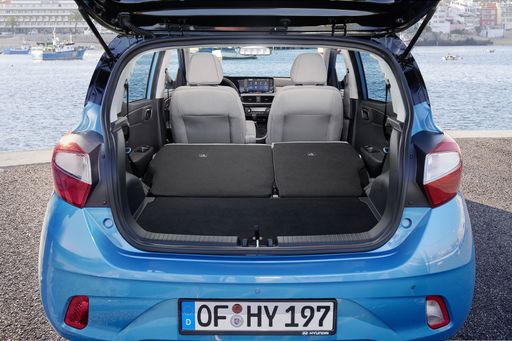 @ Hyundai Motor Company
@ Hyundai Motor Company
 @ Dacia / Renault Group Media
@ Dacia / Renault Group Media
|
 @ Hyundai Motor Company
@ Hyundai Motor Company
|
|
|
|
Costs and Consumption |
|
|---|---|
|
Price
14500 - 17100 £
|
Price
14600 - 19000 £
|
|
Consumption L/100km
-
|
Consumption L/100km
4.9 - 5.5 L
|
|
Consumption kWh/100km
13.2 - 14.1 kWh
|
Consumption kWh/100km
-
|
|
Electric Range
225 - 228 km
|
Electric Range
-
|
|
Battery Capacity
26.80 kWh
|
Battery Capacity
-
|
|
co2
0 g/km
|
co2
110 - 124 g/km
|
|
Fuel tank capacity
-
|
Fuel tank capacity
36 L
|
Dimensions and Body |
|
|---|---|
|
Body Type
SUV
|
Body Type
Hatchback
|
|
Seats
4
|
Seats
4 - 5
|
|
Doors
5
|
Doors
5
|
|
Curb weight
1013 - 1050 kg
|
Curb weight
996 - 1099 kg
|
|
Trunk capacity
308 L
|
Trunk capacity
252 L
|
|
Length
3701 mm
|
Length
3670 - 3675 mm
|
|
Width
1583 mm
|
Width
1680 mm
|
|
Height
1519 mm
|
Height
1480 - 1483 mm
|
|
Max trunk capacity
1004 L
|
Max trunk capacity
1050 L
|
|
Payload
265 - 302 kg
|
Payload
344 - 423 kg
|
Engine and Performance |
|
|---|---|
|
Engine Type
Electric
|
Engine Type
Petrol
|
|
Transmission
Automatic
|
Transmission
Manuel, Automatic
|
|
Transmission Detail
Reduction Gearbox
|
Transmission Detail
Manual Gearbox, Automated Manual
|
|
Drive Type
Front-Wheel Drive
|
Drive Type
Front-Wheel Drive
|
|
Power HP
44 - 65 HP
|
Power HP
63 - 90 HP
|
|
Acceleration 0-100km/h
13.7 - 19.1 s
|
Acceleration 0-100km/h
11.4 - 18.4 s
|
|
Max Speed
125 km/h
|
Max Speed
143 - 175 km/h
|
|
Torque
113 - 125 Nm
|
Torque
93 - 172 Nm
|
|
Number of Cylinders
-
|
Number of Cylinders
3 - 4
|
|
Power kW
33 - 48 kW
|
Power kW
46 - 66 kW
|
|
Engine capacity
-
|
Engine capacity
998 - 1197 cm3
|
General |
|
|---|---|
|
Model Year
2024
|
Model Year
2024
|
|
CO2 Efficiency Class
A
|
CO2 Efficiency Class
C, D
|
|
Brand
Dacia
|
Brand
Hyundai
|
What drive types are available for the Dacia Spring?
The Dacia Spring is available as Front-Wheel Drive.
The prices and data displayed are estimates based on German list prices and may vary by country. This information is not legally binding.
